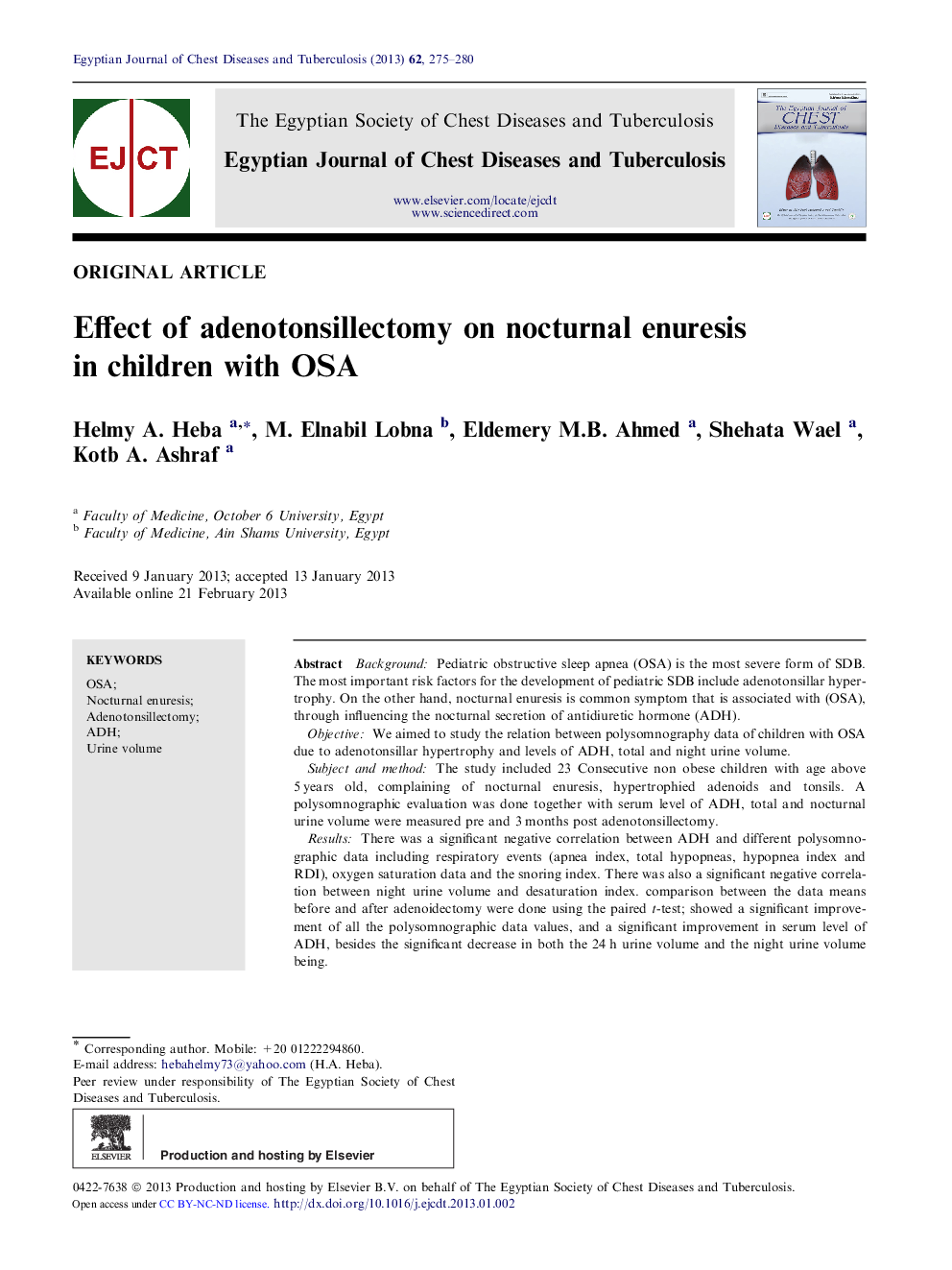| Article ID | Journal | Published Year | Pages | File Type |
|---|---|---|---|---|
| 3400058 | Egyptian Journal of Chest Diseases and Tuberculosis | 2013 | 6 Pages |
BackgroundPediatric obstructive sleep apnea (OSA) is the most severe form of SDB. The most important risk factors for the development of pediatric SDB include adenotonsillar hypertrophy. On the other hand, nocturnal enuresis is common symptom that is associated with (OSA), through influencing the nocturnal secretion of antidiuretic hormone (ADH).ObjectiveWe aimed to study the relation between polysomnography data of children with OSA due to adenotonsillar hypertrophy and levels of ADH, total and night urine volume.Subject and methodThe study included 23 Consecutive non obese children with age above 5 years old, complaining of nocturnal enuresis, hypertrophied adenoids and tonsils. A polysomnographic evaluation was done together with serum level of ADH, total and nocturnal urine volume were measured pre and 3 months post adenotonsillectomy.ResultsThere was a significant negative correlation between ADH and different polysomnographic data including respiratory events (apnea index, total hypopneas, hypopnea index and RDI), oxygen saturation data and the snoring index. There was also a significant negative correlation between night urine volume and desaturation index. comparison between the data means before and after adenoidectomy were done using the paired t-test; showed a significant improvement of all the polysomnographic data values, and a significant improvement in serum level of ADH, besides the significant decrease in both the 24 h urine volume and the night urine volume being.ConclusionChildren with OSA and nocturnal enuresis, should be considered for early adenotonsillectomy or other treatments to approve normal release of ADH, and subsequent improvement of nocturnal enuresis.
